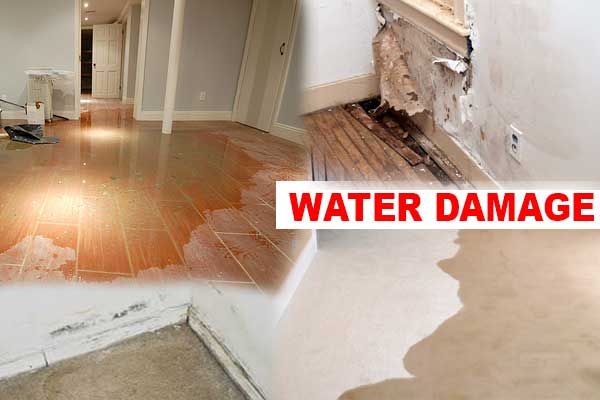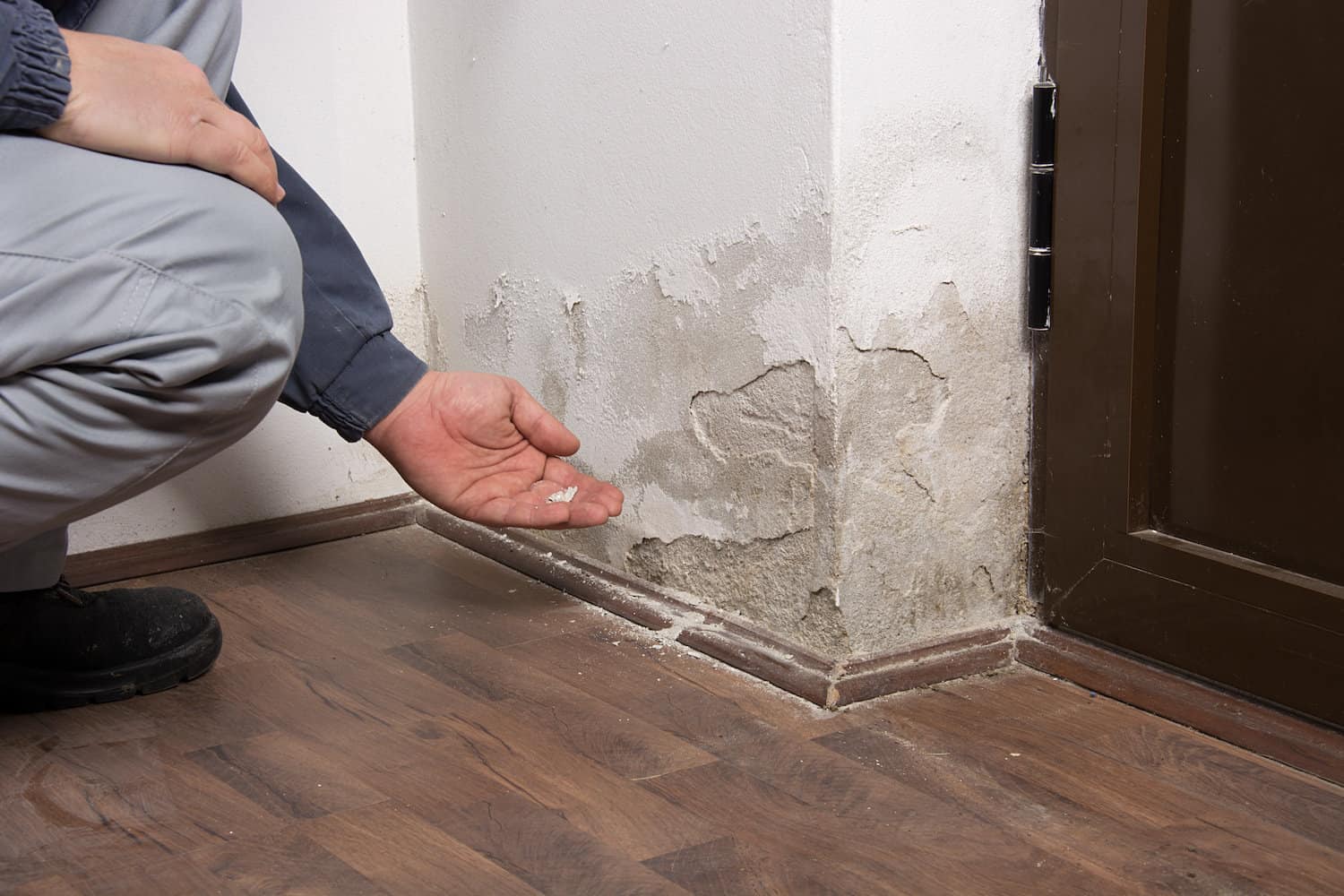Emergency Water Leak Repair to Prevent Further Property Destruction
The Process of Water Damage Cleanup: Ensuring Your Home Is Restored Successfully
Water damage can be a daunting obstacle for homeowners, requiring a careful and organized clean-up procedure to restore safety and capability. A comprehensive analysis is important to determine the level of the damages and establish the suitable removal measures. Following this, effective water removal strategies play a pivotal role in minimizing further injury. However, the subtleties of drying out, disinfecting, and eventual reconstruction are similarly important and often overlooked. Understanding these stages can make a substantial difference in the result of your home's restoration, motivating a closer check out what each step requires.
Assessing the Damages
Upon finding water damages, the very first step is to completely assess the level of the effect. This first evaluation is vital, as it aids determine the required actions for reliable cleaning and reconstruction. Begin by evaluating the impacted areas, including wall surfaces, ceilings, floorings, and individual valuables, to determine the resource of the water breach, whether from flooding, leaks, or condensation.
Recording the damages is essential for both insurance coverage cases and planning restoration initiatives - damage restoration services. Use photographs and written notes to capture the severity of the damage, noting any kind of damaged architectural components and products. Pay special attention to areas that might not be quickly visible, such as behind wall surfaces and under carpets, as concealed dampness can cause additional issues, including mold development
Additionally, assess the timeline of the water exposure. Inevitably, an extensive analysis lays the groundwork for an effective water damage cleaning procedure, making certain that all influenced locations are dealt with efficiently and thoroughly.
Water Removal Techniques

Professionals typically utilize completely submersible pumps for larger volumes of water, which can swiftly ease flooding in basements or various other impacted locations. For smaller sized quantities, wet/dry vacuums are commonly made use of to extract residual wetness from rugs and tough surface areas. Additionally, using portable extractors permits targeted elimination in constrained rooms or areas with delicate products.
In circumstances of infected water, such as sewer or floodwater, progressed extraction methods might entail making use of biohazard tools to ensure safety and compliance with health and wellness laws. High-powered removal devices are essential in reducing water retention in structural materials, which can result in mold growth and structural wear and tear if not dealt with quickly.
Ultimately, the performance of water removal strategies plays a crucial function in the overall success of the water damage clean-up procedure, preparing for subsequent repair initiatives.
Drying and Dehumidification
Once standing water has actually been successfully extracted, the next crucial phase in the water damage cleaning process is drying out and dehumidification. This step is important to avoid further damages and mold and mildew growth, which can take place within 24 to two days in damp atmospheres.
To achieve efficient drying out, customized tools such as industrial-grade air moving companies and dehumidifiers is used. Air movers circulate air throughout wet surface areas, enhancing dissipation rates, while dehumidifiers lower moisture levels airborne, advertising a favorable environment for drying out. The combination of these devices makes certain that dampness is attracted out from home furnishings, floors, and wall surfaces, enabling them to dry extensively.
It is essential to check the drying procedure very closely. Professionals commonly utilize dampness meters to examine the dampness material in numerous products, making certain that all impacted areas get to acceptable dryness degrees. This meticulous approach assists to avoid surprise moisture pockets that might result in architectural damage or unhealthy mold and mildew development.

Cleaning and Disinfecting
After the drying out and dehumidification phase is full, the next important step in water damages cleaning is cleansing and disinfecting the impacted locations. This procedure is essential to stop the growth of mold and mildew, germs, and other microorganisms that grow in moist environments.
The cleaning phase usually entails eliminating any type of debris, dirt, and contaminants from surfaces making use of specialized cleaning representatives. For tough surfaces, a mix of soap and water or business cleansing items is frequently employed. Soft materials, such as upholstery and carpetings, may need a lot more extensive cleansing methods, consisting of vapor cleaning or deep extraction methods, to guarantee comprehensive hygiene.

Sterilizing follows cleaning, utilizing EPA-approved disinfectants to get rid of unsafe bacteria. This step is vital, particularly in locations that might have entered contact with floodwaters or sewer, as these resources can posture major wellness risks.
Additionally, it is essential to attend to any type of remaining smells, which may require using smell neutralizers or sophisticated methods like ozone treatment. Correct cleansing and sanitizing not only restore the safety and security and hygiene of your home yet also lay the groundwork for successful reconstruction and repairs in succeeding stages of the water damages cleanup process.
Reconstruction and Fixings

As soon as the assessment is complete, remediation initiatives can start. This typically involves image source repairing or replacing broken materials, guaranteeing that all job adheres to neighborhood building ordinance and standards. If drywall has been jeopardized, it will need to be removed and replaced with new product. In addition, floor covering might call for comparable focus, recommended you read relying on the degree of water exposure.
It is essential to engage seasoned reconstruction specialists during this process, as they have the proficiency to handle intricate repair services successfully. Moreover, they can help mitigate possible future problems, such as mold development or architectural instability, therefore guaranteeing a secure and habitable living setting. Inevitably, effective restoration and repair services restore the home's honesty and improve its total value.
Conclusion
To conclude, the process of water damages cleanup is essential for recovering a home to its pre-damage condition. Each stage, from evaluating the damages to executing reliable water extraction strategies, complied with by comprehensive drying out, sanitizing, and needed repairs, plays a crucial function in ensuring security and compliance with building criteria. Effective implementation of these steps not only minimizes immediate damage yet also improves the lasting integrity and value of the home.
Water damages can be a daunting challenge for property owners, requiring a organized and thorough cleaning procedure to bring back security and performance. Eventually, an extensive assessment lays the groundwork for an effective water damages cleaning procedure, making sure that all impacted areas are dealt with effectively and thoroughly.
Reliable water removal methods are vital in reducing damage and preventing more difficulties complying with a water invasion event.In verdict, the procedure of water damage cleanup is important for restoring a home to its pre-damage condition. Each phase, from analyzing the damages to executing effective water removal techniques, adhered to by More Bonuses complete drying, sanitizing, and essential repair work, plays an important duty in making sure safety and conformity with building criteria.